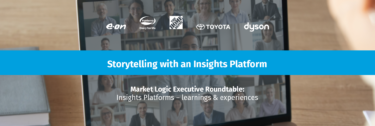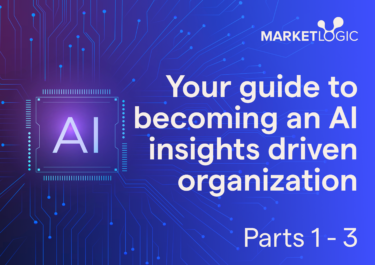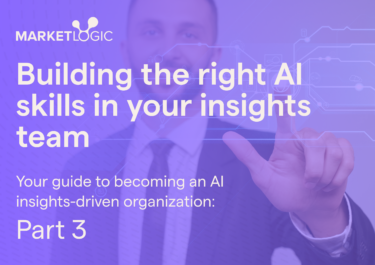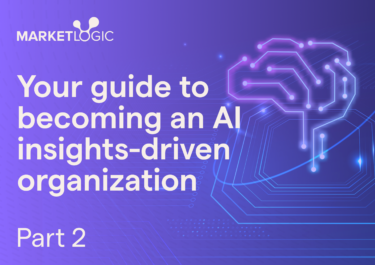
October 6, 2020
Read time: 6min

October 6, 2020
Read time: 6min
As we recently learned from Forrester’s Cinny Little, data only has value if it can drive actions that matter. The goal of storytelling in an insights organization is to get people closer to the information they need and want – and to provide recommendations for action. At Market Logic’s Insights Executive Roundtable, we heard how leaders at The Home Depot, Toyota and Fonterra leverage their insights platforms to tell stories that drive action.
Brendan Baby, Director Consumer Strategy and Intelligence and Home Depot, said his insights organization has been on a storytelling journey for a number of years. Their role is to act as storytellers for the brand, storytellers for the customer within the brand, and as strategic partners for the business.
That means that instead of serving as a research function first, the department, populated by teams from big consultancies like McKinsey and BCG, can truly act as advisors to the business. That approach has earned Brendan’s team the right to sit at the board table to share hypotheses and insights, independent of new research results.
Home Depot’s insights platform, “The Insights Depot,” has been a major enabling factor in the delivery of that strategic promise. Brendan estimates the platform leverages at least $45 million worth of insights on the platform, for better, faster, easier decisions across the organization as a whole, especially strategy, BD and pricing teams.
The Insights Depot has empowered Brendan’s expert consultants to become even stronger advisors, synthesizing, understanding and crafting stories that enable business partners to make better decisions. They use knowledge zones to aggregate data and provide information on important consumer segments or strategic topics.
Take COVID, for example: thanks to their COVID knowledge zone, Brendan said The Home Depot was able to roll out curbside delivery within three weeks of the lockdown.
At Toyota, said Jon Ciarletta, Director Consumer Insights & Analytics, the team have become quite adept at responding to crises (Kiki), which the Japanese language creates from the characters for “dangerous”(危) and “opportunity” (機). Jon’s outlook reflects this mentality.
The COVID crisis, he said, “has just been a great opportunity to really shine and provide the information our executives need.” It’s also been an opportunity to better understand their consumers and how they, in turn, respond to crises.
Jon said that while Toyota Motor North America’s insights platform “The Loop,” is only one year old, it’s already a big part of how the organization democratizes data and insights. COVID has only accelerated the process of information consolidation across the organization. Organizations as large as Toyota have data streams coming from all over the place, which makes it a challenge to focus attention.
Knowledge zones on The Loop have become the de facto source for all consumer information across the business, from BI team to dealerships. A single source of truth is more important than ever: Jon’s team are using knowledge zones to provide a 30,000-foot view across an overwhelming volume of incoming COVID-19 data and research, with a high-level, weekly summary.
Tim Opie, GM Global Insights & Strategic Planning at Fonterra launched the “Insights Farm” in March this year to “re-use insights, remove waste, reduce duplication and reallocate time.”
He described how their “Insight Farm” delivered immense value during the early days of COVID, when his team was receiving 20 plus pieces of insights work everyday while being bombarded with questions from the business. The Fonterra “Insight Farmers” were able to use their COVID-19 knowledge zone to cut through the noise, channel appropriate conversations, and drive action. It acted as their “GPS wayfinding system.”
At Dyson, said Tom Fitzgerald, Senior Insight Manager, they’re all about “telling a bigger picture.” With a wide range of products that span various markets, retail store drop-offs during COVID made an impact. Understanding that retail landscape was made easy with their market insights platform, “Searchable.”
Using knowledge zones, they were able to collaborate with other intelligence and analytics teams to synthesize various sources of information from around the business and quickly turn these into stories and insights for good decision making. Tom said this was especially helpful for senior stakeholders, who are keen to get as many insights as they can as quickly as they can, to make very rapid decisions, without reaching out to six or more different teams for guidance.
Summing up, panelists shared their views on what makes a great story. Brendan recalled his early career as a high school history teacher, where he learned that people can’t remember names and numbers, so bringing the facts to life in a compelling story is the best way to make it memorable.
Jon added that it’s important to keep stories simple. He applies a three-bullet-point rule to help his teams do the hard work of focusing stakeholders’ attention on the essentials. In times like these, focusing on the essentials is easier said than done. But thanks to great storytellers and the technology that enables them, more and more insights teams are able to cut through the noise to deliver fast, actionable, quality insights.

How is AI transforming roles, skills and capabilities in insights functions?

Interview with Nextatlas CEO Luca Morena

An introduction to gen AI for businesses. From RAG to LLMs — get the lowdown.

Exploring the Future of AI in Marketing: Integrating Insights into Business Systems for Enhanced Decision-Making.

To succeed in today's dynamic consumer landscape, your organization must be able to react faster…

How does this guide help you? In part 3 of our guide, we’ll delve into…

Learn the AI insights-powered enterprise systems architecture and processes.

Transform your organization with insights. Download this guide to find out how.